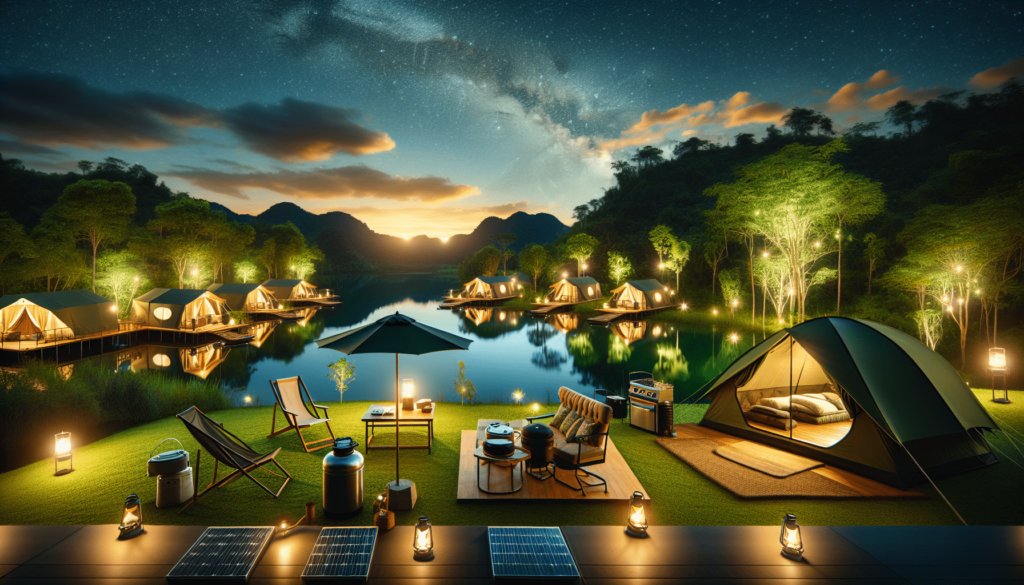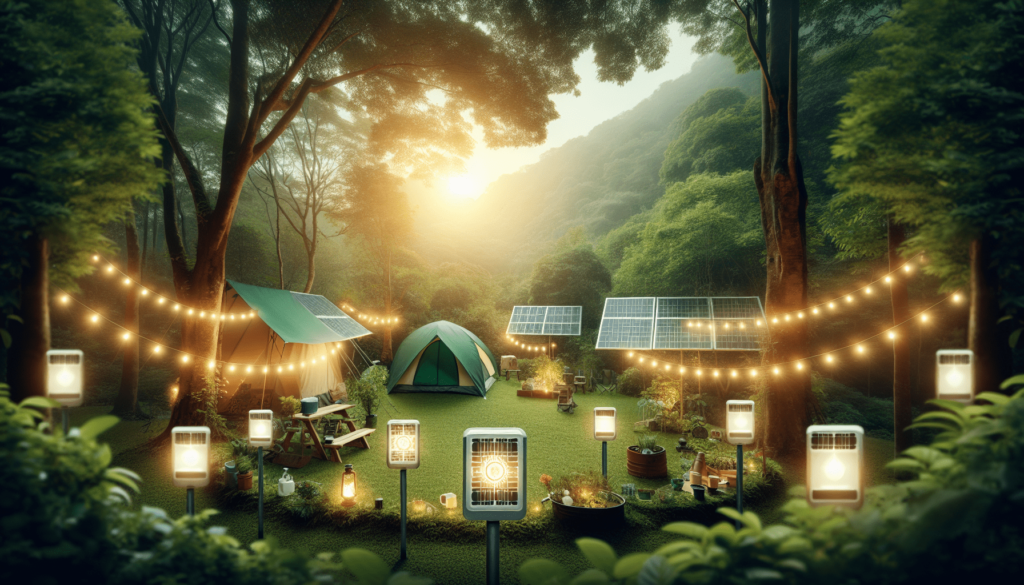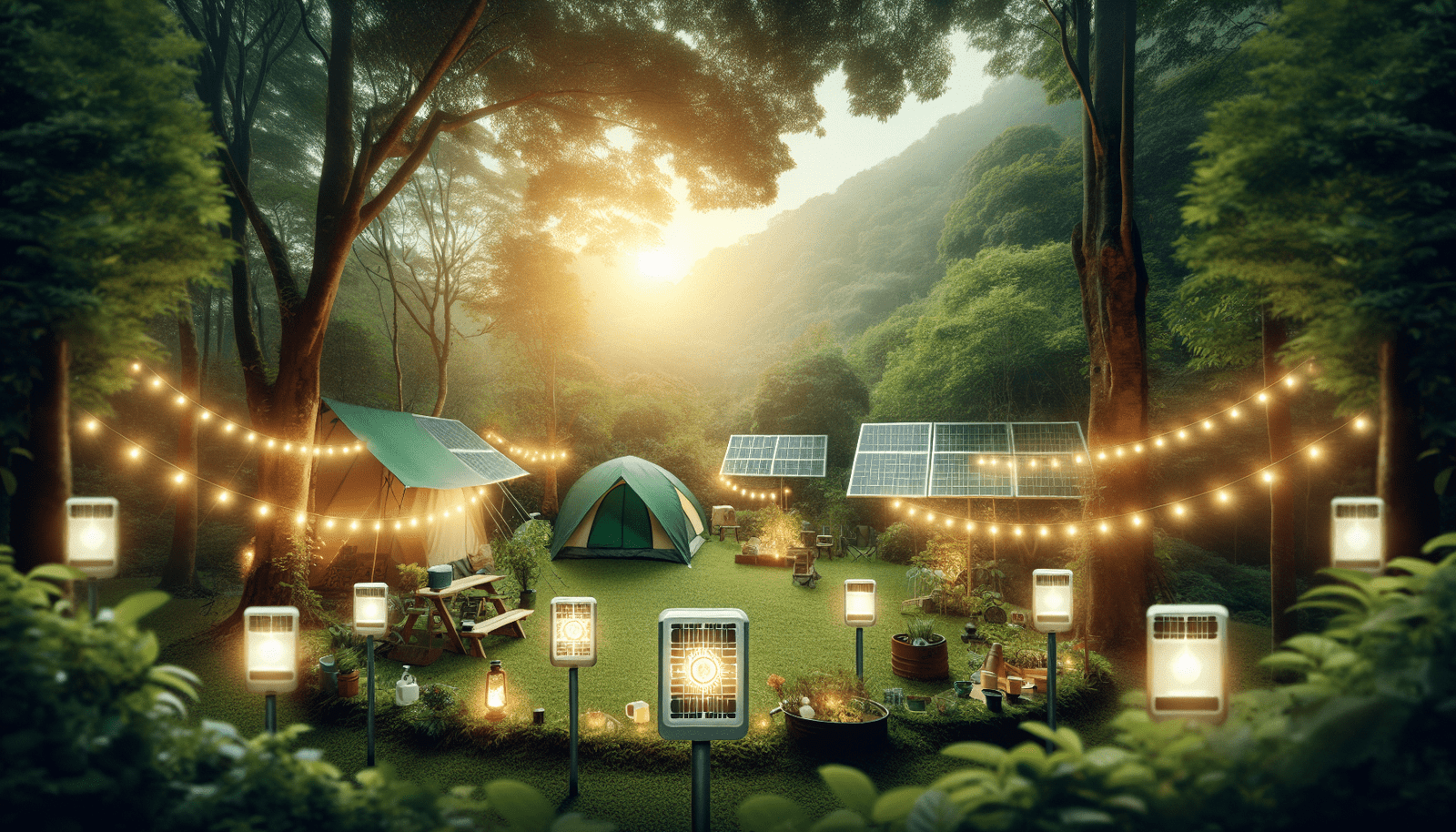Imagine embarking on an epic overland adventure, traversing breathtaking landscapes and connecting with nature at every turn. Now, picture reaching your destination, a pristine camping spot amidst the beauty of the great outdoors. As you set up camp, you can’t help but wonder, how do I create a sustainable overland campsite? In this article, we will explore practical tips and innovative ideas that will help you minimize your impact on the environment while enjoying the wonders of outdoor living.
Choosing the Location
When it comes to creating a sustainable overland campsite, one of the first things you need to consider is the location. Choosing the right location can have a significant impact on the environmental sustainability of your campsite. Here are a few key factors to consider when selecting a location:
Consider the Environmental Impact
Take the time to carefully assess the potential environmental impact of your chosen campsite location. Look for a site that has minimal ecological value, avoiding areas that are home to endangered or sensitive species. By avoiding fragile ecosystems, you can minimize the impact your campsite will have on the surrounding environment.
Research Local Regulations
Before setting up your campsite, it is crucial to familiarize yourself with any local regulations or guidelines that may apply to your chosen location. There may be specific rules regarding where you can set up camp, the maximum number of campers allowed, and rules on waste management. By conducting thorough research, you can ensure that your campsite adheres to all relevant regulations and minimize any potential negative impacts.
Look for Community Support
Engaging and building relationships with local communities is essential for a sustainable overland campsite. Local communities can offer valuable insights into the area, such as knowledge about the surrounding environment and cultural heritage. Seeking community support can help create a sense of stewardship and partnership, fostering a positive relationship between your campsite and the local community.
Minimizing Waste
Once you have chosen the location for your overland campsite, it’s important to prioritize waste minimization. Implementing effective waste management practices will not only reduce the environmental impact of your campsite but also enhance the overall sustainability of your operations. Here are a few strategies to help you achieve this:
Practice Leave No Trace Principles
One of the fundamental principles of sustainable camping is leaving the campsite as you found it. This means packing out all trash and leaving no trace behind. Encourage campers to bring reusable containers and bags, eliminate single-use plastics, and properly dispose of or recycle any waste generated during their stay. By practicing Leave No Trace principles, you can play a significant role in preserving the natural beauty of the area.
Use Composting Toilets and Biodegradable Products
Traditional flush toilets require significant amounts of water and can have a negative impact on the surrounding environment. Consider installing composting toilets or alternative waste management systems that can minimize water usage and safely process human waste. Additionally, opt for biodegradable products, such as soap and cleaning supplies, to further reduce the environmental impact of your campers’ activities.
Reduce, Reuse, and Recycle
Implementing a comprehensive waste management system that includes recycling stations and encourages campers to reduce and reuse their waste is essential. Provide clearly labeled recycling bins and educate campers about the importance of recycling and minimizing waste. Encourage the use of reusable water bottles and utensils, and consider implementing a system for campers to exchange or share camping gear to reduce the need for new purchases.

Conserving Water
Water is a precious resource, especially in outdoor environments. Implementing water conservation measures in your overland campsite can help to preserve this valuable resource and reduce your overall environmental impact. Here are three strategies to help you conserve water:
Collect and Filter Rainwater
Rainwater harvesting is a sustainable method to collect and utilize water. Set up rainwater collection systems by installing rain barrels or larger tanks to capture rainwater from roofs or other surfaces. This collected rainwater can then be used for various purposes, such as watering plants, cleaning, or even drinking. Implement proper filtration systems to ensure water is safe for use.
Use Water-Saving Techniques
Encourage campers to practice water-saving techniques during their stay at your campsite. Install low-flow faucets and showerheads in bathroom facilities, and provide information and reminders about shorter showers and turning off the tap while brushing teeth. Additionally, consider implementing a system that encourages campers to reuse their graywater, such as from dishwashing, for irrigation purposes.
Educate Visitors about Water Conservation
Education plays a crucial role in promoting water conservation in your overland campsite. Provide informative signage that highlights the importance of water conservation and shares tips on how campers can minimize their water usage during their stay. Consider organizing workshops or educational sessions to provide further guidance and engage campers in water conservation efforts.
Using Renewable Energy
Incorporating renewable energy sources into your overland campsite can greatly reduce your reliance on fossil fuels and minimize your carbon footprint. Embracing sustainable energy solutions not only benefits the environment but can also save you money in the long run. Here are a few ways to integrate renewable energy into your campsite:
Install Solar Panels
Solar panels are an excellent way to harness the power of the sun and generate clean, renewable energy. Install solar panels on structures like bathrooms, offices, or common areas to power lighting and other electrical needs. This can significantly reduce reliance on external electricity sources and minimize greenhouse gas emissions.
Utilize Wind or Hydro Power
If your campsite experiences consistent wind or has access to flowing water, consider utilizing wind turbines or small-scale hydroelectric systems to generate electricity. These renewable energy sources can be particularly effective in remote locations where access to the traditional power grid is limited. Carefully assess the local environment and available resources to determine the feasibility of these options.
Opt for Energy-Efficient Appliances
When purchasing appliances and equipment for your campsite, prioritize energy-efficient options. Look for appliances with high energy star ratings and low energy consumption. By opting for efficient lighting, refrigeration, and cooking equipment, you can minimize your overall energy usage and create a more sustainable campsite.

Creating Natural Barriers
Creating natural barriers in your overland campsite is not only aesthetically pleasing but also helps to enhance environmental sustainability. These barriers can serve various purposes, such as preventing erosion, discouraging wildlife disturbance, and creating a sense of privacy for campers. Here’s how you can incorporate natural barriers into your campsite:
Plant Native Vegetation
Planting native vegetation is an excellent way to establish natural barriers and enhance the ecological value of your campsite. Native plants are adapted to the local climate, require less water, and provide habitat for local wildlife. Planting trees, shrubs, and grasses can help stabilize soil, reduce erosion, and create visually appealing boundaries between different areas of your campsite.
Build Natural Fences
Utilize natural materials found in the surrounding environment to create fences or hedges that demarcate different areas of your campsite. Rocks, fallen logs, or woven branches can be used to build low fences or privacy screens. These natural barriers not only contribute to the overall aesthetics of your campsite but also provide essential habitat and shelter for local wildlife.
Use Natural Slopes or Obstacles
Take advantage of natural slopes or existing obstacles in the landscape to separate different areas within your campsite. For example, positioning campfire pits or picnic areas at the base of a hill can create a sense of seclusion and naturally define different zones. These natural features can also help reduce the impact on sensitive areas by redirecting foot traffic.
Managing Campsite Access
Developing a well-managed system for campsite access is crucial to maintain the sustainability and integrity of the area. Without proper management, increased visitor numbers can lead to environmental degradation and compromise the overall camping experience. Here are a few strategies to effectively manage campsite access:
Designate Designated Campsite Areas
Maintain designated camping areas within your campsite to ensure that campers have clear boundaries and can set up camp on suitable, impact-resistant surfaces. Define these areas with signage or markings to guide campers and prevent the spread of camping impacts to fragile environments or culturally significant areas.
Implement Reservation Systems
Implementing a reservation system allows you to manage the number of campers in your site and ensures that the facilities and resources can adequately support the visitor demand. By requiring reservations, you can prevent overcrowding, maintain a sustainable capacity for your campsite, and minimize the strain on resources and the environment.
Enforce Maximum Capacity
Enforcing a maximum capacity for your campsite is essential to prevent overcrowding and maintain the environmental integrity of the area. Carefully assess the carrying capacity of your campsite and determine the maximum number of campers that can be accommodated without compromising the surrounding environment. Communicate these limits clearly to ensure campers understand the importance of adhering to them.
Providing Environmental Education
One of the best ways to promote sustainability in your overland campsite is through environmental education. Providing campers with opportunities to learn about the local environment, conservation efforts, and sustainable practices can foster a sense of appreciation and stewardship. Here are a few strategies to provide environmental education in your campsite:
Organize Workshops and Talks
Organize workshops and talks led by knowledgeable individuals on various environmental topics. These can include sessions on local flora and fauna, conservation efforts, or sustainable outdoor practices. Engage both adults and children through hands-on activities and interactive discussions, allowing them to connect with and appreciate the natural world around them.
Create Informational Signage
Place informative signage throughout your campsite to educate campers about the local environment, wildlife, and sustainable practices. Highlight key features of the area, such as rare species, sensitive habitats, or cultural heritage sites, and provide tips on how campers can minimize their impact and engage in sustainable behaviors during their stay.
Develop Interpretive Trails
Designate interpretive trails within your campsite that provide educational opportunities along the hiking routes. Install signs or markers that provide information about the local flora, fauna, geology, or historical significance of the area. These interpretive trails can enrich the camping experience by offering campers a chance to connect with nature and learn about the environment.
Promoting Wildlife Conservation
In order to maintain the ecological balance and preserve biodiversity within and around your overland campsite, it is essential to promote wildlife conservation. Here are a few ways you can actively support and protect wildlife:
Preserve Natural Habitat
Maintaining the natural habitat within your campsite is critical for supporting local wildlife populations. Preserve and protect existing flora and fauna, and avoid unnecessary disturbances to natural features like water bodies, vegetation, or nesting areas. Create buffer zones around sensitive habitats and educate campers about the importance of respecting these areas.
Avoid Disturbing Wildlife
Educate campers about the importance of respecting and minimizing their impact on wildlife. Encourage them to maintain a safe distance from animals and observe from afar, never feeding or approaching them. Promote responsible pet ownership and establish guidelines for campers regarding the appropriate behavior around wildlife to ensure their safety and the safety of the animals.
Encourage Bird and Wildlife Watching
Promote the activity of bird and wildlife watching within your campsite. Provide information about the local species, their habits, and where they can be observed. Encourage campers to be patient and quiet, avoiding sudden movements and loud noises that may scare away wildlife. By fostering an appreciation for wildlife, you can create a campsite that values and protects the natural biodiversity.
Supporting Local Communities
A truly sustainable overland campsite recognizes the importance of supporting local communities. By engaging and contributing to the economic and social wellbeing of the local area, you can foster a positive relationship and promote sustainable tourism practices. Here are a few ways you can support local communities:
Buy Local Products
Wherever possible, source and promote local products for use in your campsite. This can include food, beverages, crafts, or equipment. Supporting local businesses not only helps to boost the local economy but also reduces carbon emissions associated with transporting goods over long distances.
Hire Local Guides and Staff
When hiring staff or guides for your campsite, prioritize individuals from the local community. Not only does this provide employment opportunities, but it also ensures that campers receive authentic and knowledgeable insights into the area. By involving local guides and staff, you contribute to the preservation of local culture and heritage.
Contribute to Local Charities
Identify local charities or non-profit organizations that support environmental conservation, community development, or cultural preservation in the area. By making regular contributions or participating in local initiatives, you can directly support the wellbeing of the community and the sustainability of the region.
Monitoring and Evaluating Impact
In order to continually improve the sustainability of your overland campsite, it is essential to monitor and evaluate your environmental practices. Regular assessments and data analysis provide valuable insights into the effectiveness of your strategies and help identify areas for improvement. Here are a few ways to monitor and evaluate the impact of your campsite:
Regularly Assess Environmental Practices
Regularly assess the environmental practices implemented in your campsite. This can include monitoring waste management processes, water conservation measures, energy usage, and overall environmental impact. Identify any areas where improvements can be made and develop action plans to address them.
Record and Analyze Data
Collect data related to various sustainability indicators, such as waste generation, water consumption, energy usage, and visitor numbers. Analyze this data to identify trends and patterns, allowing you to make informed decisions regarding future improvement initiatives. Data analysis can also help quantify the positive environmental impact of your campsite and facilitate communication with stakeholders.
Continuously Improve Sustainability Measures
Utilize the information gathered through monitoring and data analysis to continuously improve the sustainability measures in your campsite. Regularly update and refine your practices, incorporating new technologies, strategies, or initiatives that align with emerging best practices in sustainable camping. Engage with campers and the local community to encourage feedback and suggestions for improvement.
Creating a sustainable overland campsite requires careful planning, thoughtful practices, and ongoing commitment. By considering the location, minimizing waste, conserving water, using renewable energy, creating natural barriers, managing campsite access, providing environmental education, promoting wildlife conservation, supporting local communities, and monitoring impact, you can create a campsite that not only provides a memorable experience for campers but also contributes to the long-term wellbeing of the environment and surrounding communities. With each sustainable action taken, you play your part in preserving our natural resources for future generations to enjoy. Happy camping!

